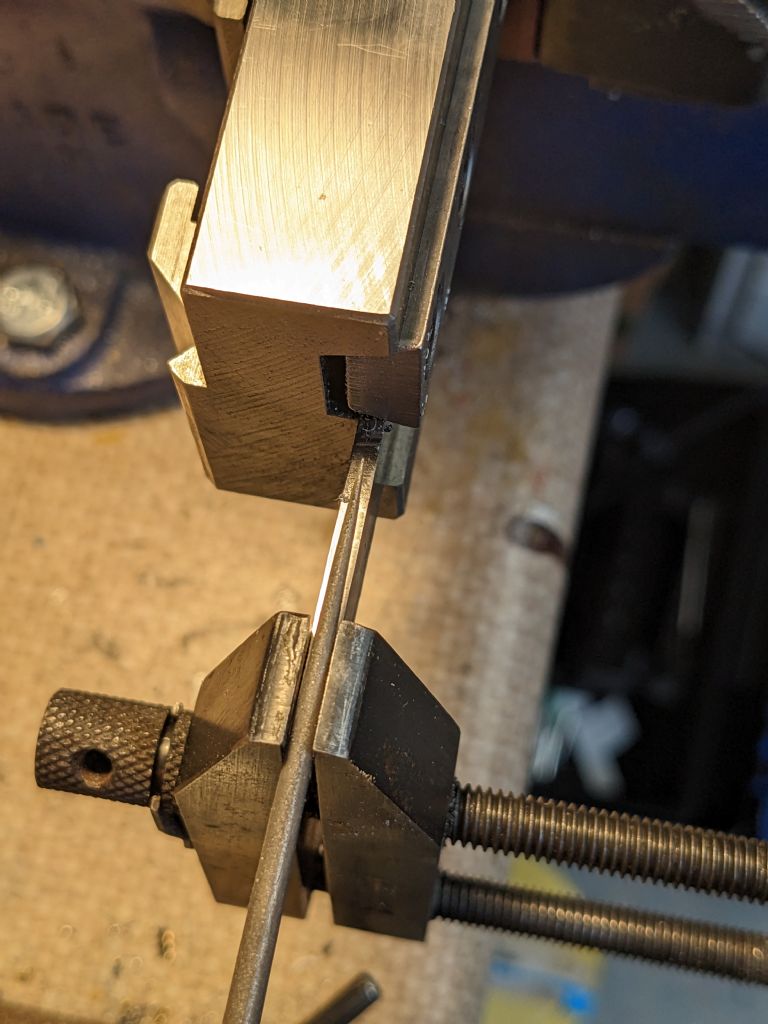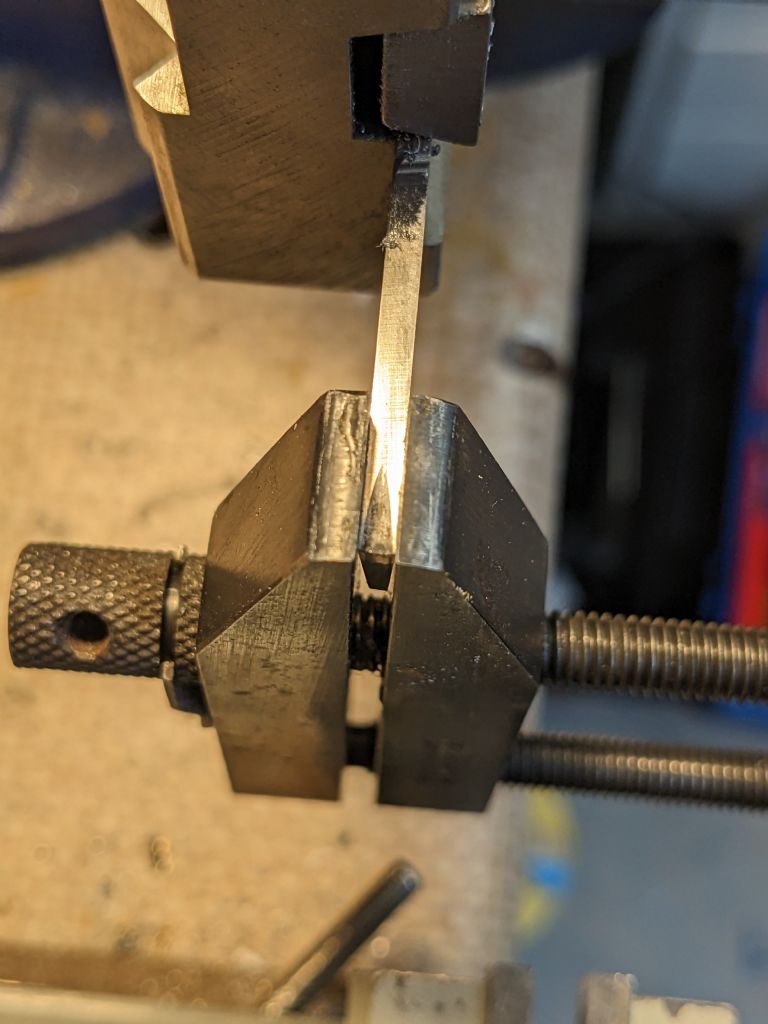Provided you have a sharp tool and sensibly light infeed dig in isn't problem with power feed.
The 'bang, everything stops" experience with power feed is invariably due to chip jamming in the tool slot. Which is why lubrication is desirable and the narrowed chip produced by insert tools so beneficial. As Andrew says a properly set up and properly fed insert tool leaves an excellent finish showing that the chip doesn't significantly touch the sides of the slot. Any contact being so light that the surface is not marked.
In practice we generally have to grind a conventional HSS blade with a flat top. Geo.H Thomas put a Vee top and front on his (how?) but thats for advanced folk only.
Grinding the front at an angle effectively produces a tilted chip that is less likely to jam up as it's already trying to rotate away from the walls of the slot. The top of the tool also needs to be angled for best results as that re-enforces the twisting action. Get the two angles opposed and it will jam! Need to get the speeds and feeds right so a long chip comes out. Unfortunately angling the tip produces a side force on the tool so it rubs disturbing the finish. All too often hobsons choice. Pip on the end of the job or rub marks.
Tight spiral chips on top of the tool indicate incorrect speed and feed combination. High risk of jamming up.
As ever careful set-up and careful work practice will get round these issues but its important to be aware of what can go wrong.
Small lathes have slender feed screws.
Effectively the push force goes through a column the core diameter of the screw. Not very big.
The helix of the thread produces a side force so the unsupported length of screw between the handle bearing and nut has a bowing force imposed. Clearance between nut and thread doesn't help as this provides extra space for any bow.
If the tool stops cutting momentarily the feed forces causes the unsupported part of the screw to bow acting like a stiff spring. Further feed with the tool not cutting increases the bow until the spring force is sufficient to re-start cutting an action whereupon the tool jumps forward. It takes more force to start a cut than it does to keep it going so the restarted cut is even greater than pure geometry predicts. In the worst case the job climbs over the tool or breaks it during the climb process.
Naturally the deeper the parting off slot the longer the unsupported part of the feed screw so the greater the bow tendency. Deeper slot means more chip drag too and thinner part of job remaining makes the whole thing less stable so, if a hand feed job is going to go wrong it always seems to be about 2/3 rds through. Just when you start to relax thinking "Yup, it's going right this time!"
Hence Daves "4 thou cut going to 25 thou and bang" scenario. Most likely with materials that work harden or form built up edges.
Given maliciously careful hand feed its possible to demonstrate this spring action on a slightly loose machine with the slide visibly oscillating as the cut stops and starts. First happened to me with an alloy forming a built up edge leading to regular momentary stops in cutting after the built up edge formed before it broke away as the tool rubbed allowing cutting to resume. Spectacular marks on the cut faces.
Using a rear tool post with a conventional feed screw keeps the screw in tension so there is no bow effect. SouthBend Heavy 10 lathes fitted with a taper turning attachment have the cross feed screw effectively reversed so it pulls from the back operating in tension. Parting off with a taper turning equipped Heavy 10 is noticeably better behaved and generally less fraught than with the non taper turning version with its conventional push feed screw.
Clive
Edited By Clive Foster on 25/03/2023 09:55:16
Martin Kyte.


![wp_20230324_001[1].jpg wp_20230324_001[1].jpg](/wp-content/uploads/sites/4/images/member_albums/162324/922868.jpg)





